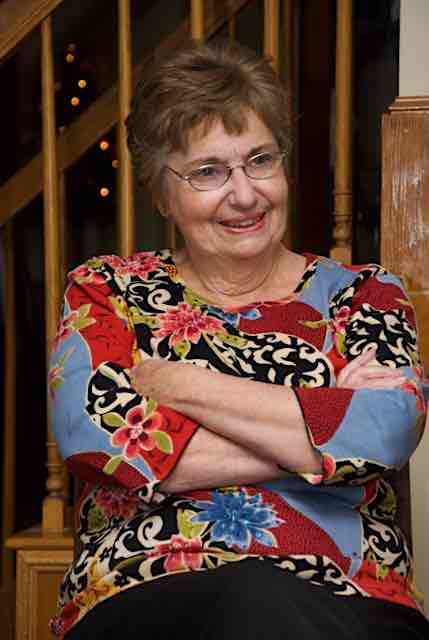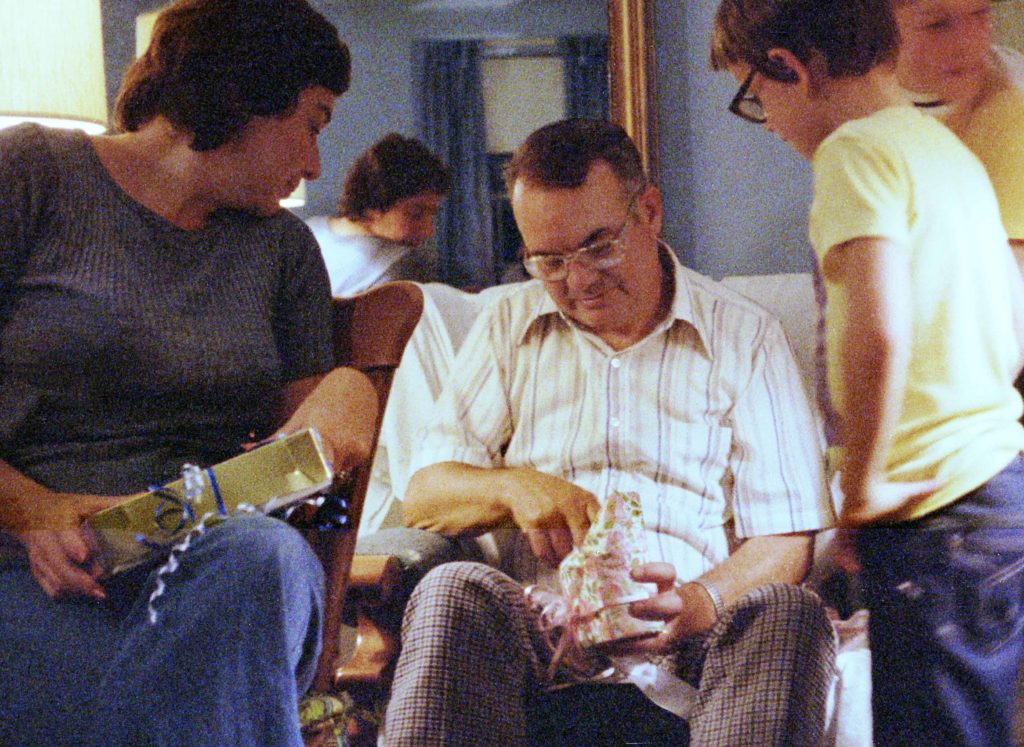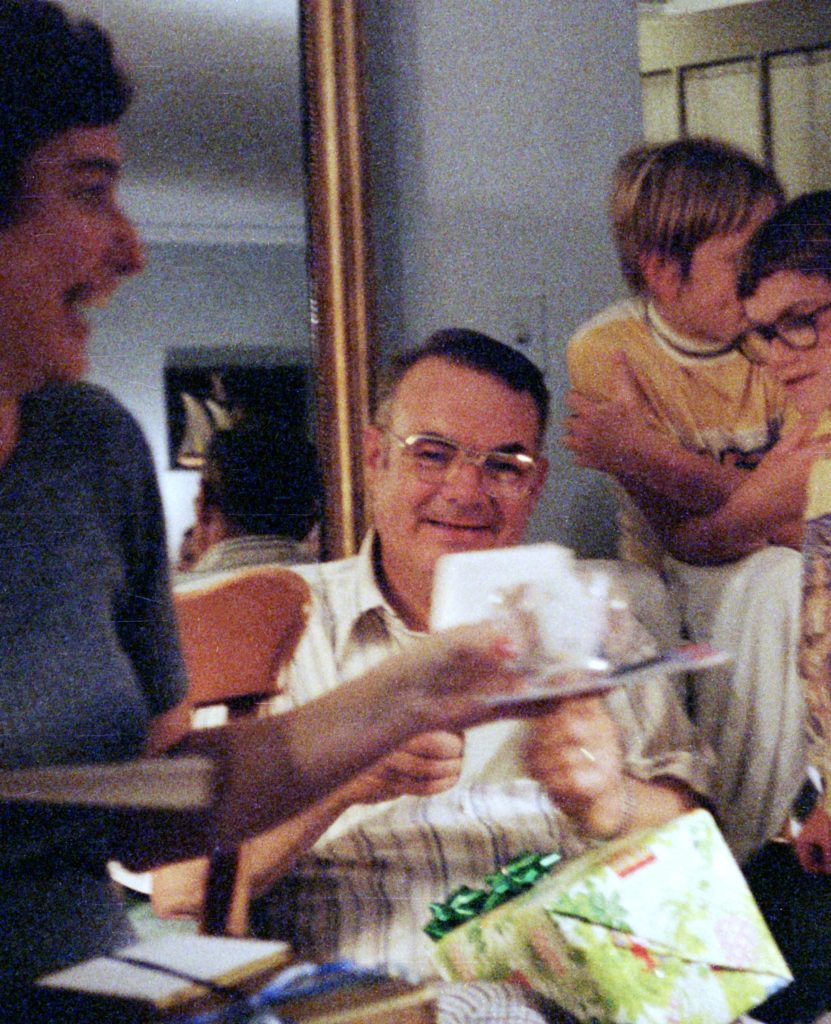I’d like to post a couple of items here that I created for Mum’s wake and funeral. The first is a video I made for the funeral home; it played during the wake.
I made it via Apple Photos; I have face recognition set up, and I went through the pictures it had tagged as having Mum in them. From there, I added in some slide scans, including a few taken when she was three or four years old. I chose the “Ken Burns Effect” for the transitions; it got me close out of the box, and then I viewed it, and edited the starting and ending zoom and pan for certain images to better suit them. I ended up keeping the default Ken Burns effect music; I’d been thinking I’d use “Firefly” by Over the Rhine, but found that (A), it didn’t match the movement of the slides well, and (B) it was too sad for my frame of mind right then.
The second is the eulogy I read at the funeral. I was fine while I was writing and rehearsing it beforehand, but as soon as we started wheeling the casket down the aisle, I broke down, and really couldn’t hold myself together while reading it. It contains a statement from her brother, who was unable to attend:
Hi.
Mum would have loved to have seen you all here. She wasn’t morbid, but she did like funerals.
I remember one time, she’d been to a funeral and was talking about the music she’d heard at dinnertime, and what kind of music she’d like to have for her own.
It turned into one of those silly dinner-time conversations, and Karen wiped us all out — including Mum — with “How about ‘Ding Dong, The Witch is Dead?‘”
(She got a kick out of it, but for the record, sorry Mum, but we’re not gonna do it.)
The two things that first spring to mind when I think about my mother was her devotion to family, and her strength.
Mum loved being surrounded by her kids and grandkids. When she went to the Cape, she always wanted to have the kids with her.
One of Brian’s kids called her “the fun grandmother”, because she liked doing things with them.
She liked to entertain, but it was almost always for family. Easter dinners, birthday parties, big birthday parties for the whole extended family, and of course, her Christmas Eve parties every year.
It’s appropriate that she died during the Christmas season.
Mum loved Christmas. She loved riding around looking at the lights, the decorations, the hustle and bustle, the activity.
She loved giving gifts.
Every year, she would make dire predictions about how she had to cut back, and that she couldn’t believe how much she was spending on Christmas.
And every year, there was a big stack of presents.
In hindsight, I don’t think she could help herself — she just loved gift giving, and doing for other people. Any time there was a new baby in the family, she’d send out a package for the baby.
Mum was always the disciplinarian of the family. I’m not sure she actually relished the role, but she never shirked it, and never wanted to dump any problems onto Dad.
So she was the one who yelled at us, and Dad got to be the good guy… courtesy of Mum.
While she could be very critical of us, she didn’t have self pity. She was widowed young, but she never complained about that. And when she did talk about it, in retrospect, it was more along the lines of “I was widowed, and I had to raise five kids… but I did it.”
And while she could be critical, there was NEVER any doubt that she loved us and would support us.
Mum liked being in the thick of things. If I was going for a ride up to Rockport, say, or the Seashore Trolley Museum or Nantasket, she’d want to tag along.
(I never did get her to go along on the motorcycle, though).
I need to tell you the My Dead Body story.
Back in my Photo: Hour days, there came a point when I was the only person who could set up our new store in Medford.
This was well before cell phones. So I couldn’t call to say I’d be late, and I ended up being later than I’d intended.
I’d taken the train in, and the owner promised to get me back to the station. Through a series of disasters, it was about 1:30 in the morning when we got back to the station.
I was parked on a deserted road near the station, and I was walking back to the car, when I saw headlights.
Uh-oh. Who was it?
Was it some teenagers come to find a secluded place to mess around? Was it the police?
No. It was Mum, with the dog in the back of the car, looking for my dead body. “Get in the car,” she snarled.
Mum was accustomed to being the strong one.
She much preferred to help US than to have us help HER, and the last few years were galling to her. It embarrassed her to tears when I had to help her get dressed and into bed.
But if anything exemplifies her strong family feelings, it’s the fact that she (and Dad) managed to instill in all of us that family is important, and that we need to support each other.
The one good thing about these nightmarish last four years, the ONE good thing, is the mutual support my siblings have given to her, and to me.
People have complimented us about how we’ve taken care of her over these past four years. We had to. It’s what she taught us.
And so, while I’m impossibly sad right now, this is not a tragedy. It’s just time.
I’ve been looking at pictures of her from the past twenty years, and up until the last couple of years, she really did enjoy her life.
She loved to laugh, and she loved being the center of her family.
Mum’s brother Kip was not able to come, and sent this message:
I’d like to share only a couple things about Darrell, though I could say a lot more and a lot slower in getting it out.
Darrell was a special sister who was fierce about family. On two occasions she exemplified this.
When my father remarried, she and Eddie did not hesitate in taking me under their roof so I could be more comfortable.
Once again I needed their help.
She and Eddie opened their doors to my family when we were displaced for months due to a fire in our house. Four adults and eight kids in that house on Ponkapoag Way.
When she and Joanna were having kids, Eddie was working a lot of Sundays.
So, I would go to Mass with either Joanna or Darrell and the 5, 6, 7, or 8 kids. A woman who often sat behind us eventually asked which lady I was married to and where all the kids came from. We were so close.
I hope over time I showed that I followed her lead with my family and Darrell’s children who are a gift and for whom I’m forever grateful.
For over 80 years you have been
more than a big sister to me; you’ve been a friend.
I love you dearly, Darrell, and I’ll miss you so much.
Thank you all for coming, and thank you for being with us.




